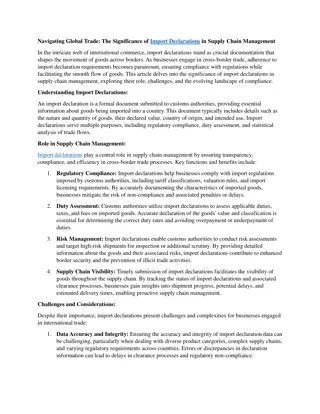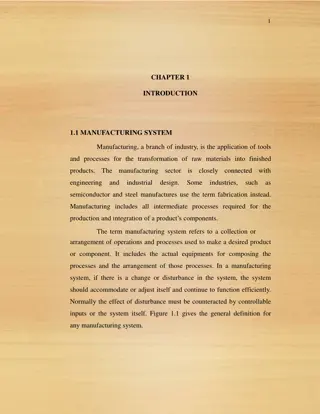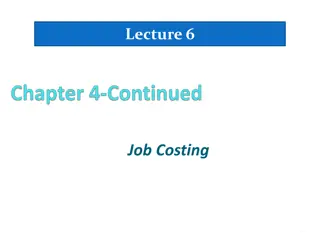National Import Substitution Strategy for Selected Manufacturing Industry SubSectors in Ethiopia
Document outlines a strategy for import substitution in manufacturing sectors of Ethiopia, identifying competitive products and developing a phased implementation roadmap for enhancing domestic market competitiveness and growth. Strategic interventions and benchmarking inform the five-year plan to boost local production efficiency and address supply-side challenges.
Download Presentation

Please find below an Image/Link to download the presentation.
The content on the website is provided AS IS for your information and personal use only. It may not be sold, licensed, or shared on other websites without obtaining consent from the author.If you encounter any issues during the download, it is possible that the publisher has removed the file from their server.
You are allowed to download the files provided on this website for personal or commercial use, subject to the condition that they are used lawfully. All files are the property of their respective owners.
The content on the website is provided AS IS for your information and personal use only. It may not be sold, licensed, or shared on other websites without obtaining consent from the author.
E N D
Presentation Transcript
Standard 10.3 Students analyze the Students analyze the effects of the Industrial effects of the Industrial Revolution in England, Revolution in England, France, Germany, Japan, France, Germany, Japan, and the United States. and the United States.
What were What were Social effects Social effects of the industrial revolution of the industrial revolution In terms of social structure, the Industrial Revolution witnessed the triumph of a middle class. Industrial workers were better paid than those in agriculture. With more money, women ate better, had healthier babies, who were themselves better fed. Ordinary working people found increased opportunities for employment
Child labor Children were expected to work. Employers also liked that they could pay a child less than an adult. Children younger than nine were not allowed to work, children were not permitted to work at night The work day of youth under the age of 18 was limited to twelve hours The first law against child labor, the Factory Act of 1833.
Housing Poor people lived in small houses in cramped streets. These homes would share toilet facilities, have open sewers and would be at risk of damp. Conditions did improve during the 19th century as public health acts were introduced covering things such as sewage, hygiene and making some boundaries upon the construction of homes. Not everybody lived in homes like these. The Industrial Revolution created a larger middle class of professionals such as lawyers and doctors. The conditions for the poor improved over the course of the 19th century because of government and local plans which led to cities becoming cleaner places, but life had not been easy for the poor before industrialization.
Popular culture Popular culture
Popular culture Popular culture the culture of the people It results from the daily interactions, needs and desires and cultural 'moments' that make up the everyday lives of the mainstream. It can include any number of practices, including those pertaining to cooking, clothing, mass media and the many facets of entertainment such as sports and literature. People like to feel a part of a group and to understand their cultural identity within that group, which tends to happen naturally in a small, somewhat isolated community.
This powerpoint was kindly donated to www.worldofteaching.com http://www.worldofteaching.com is home to over a thousand powerpoints submitted by teachers. This is a completely free site and requires no registration. Please visit and I hope it will help in your teaching.























